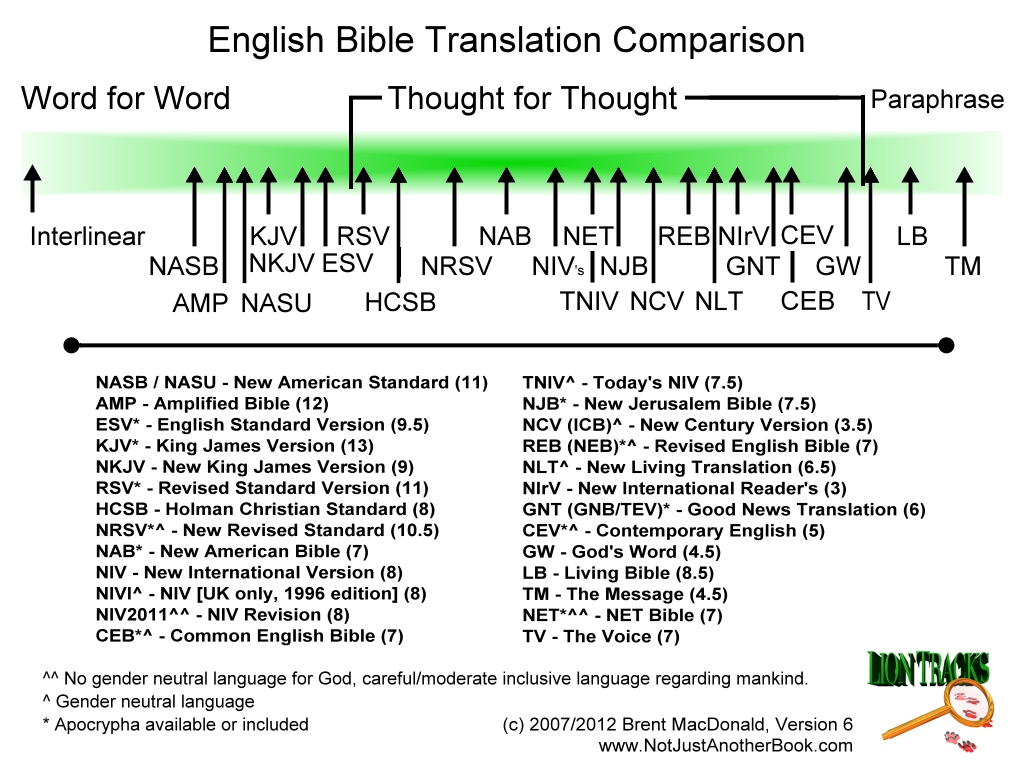Here is a very nice visual comparison of popular English Bible versions available today. The site itself from whence this image comes has details about what the chart means. For instance, the number in parentheses is the suggested grade level for reading that translation. I see that my NIV falls into the 8th grade category. King James is at a college level. The NRSV that the pastor uses is designated tenth grade level.
The chart also notes which translations use "gender neutral language." For example, the NRSV uses "humankind" when talking about the creation in Genesis 1. Someone pointed out that applying gender to God is an old-fashioned concept. This is yet another thing for my mind to get used to thinking after all those years of calling God "Heavenly Father."
The same website mentioned above also has a graphic showing how many people were involved and what year these modern translations were finished. For example, only one person worked on The Message, my current reading Bible, and it was complete in 2002. I know from reading the preface to The Message that Eugene Peterson, the man who translated it, took ten years to finish it.
The first version of the NIV was done in 1978 and 110 people helped make it. The NRSV was done in 1989 after 30 people worked on it. You may already know that the King James Version was done in 1611, but did you know that the New King James Version was finished in 1982 after more than twice the number of original KJV scholars worked on it?
If you are looking for a new Bible or trying to decide which one to give to someone, I can tell you these things--if you don't have a bookstore that carries a large selection, try Amazon.com or ChristianBook.com because they both have book previews. Sometimes Google Books does also. When you are trying to choose, it can get tricky because there are so many versions. My friend on the bench the other day was dead set on having the words of Christ in red and a concordance. Most translations offer a concordance, but not all have the text attributed to Jesus in red. This may be because not everyone thinks it's exactly word-for-word what He said. As I read somewhere, ancient historians were more concerned with getting the gist correct.
A person can get caught up in the politics of which translation is aimed at more liberal readers or more conservative readers. I don't know enough to worry about that yet. I have a translation by a gay college professor and I really like it. It was the second Bible I bought. In fact, I recommend having more than one version. You can achieve that by buying a parallel Bible with two or more translations in one book. I suppose that after those decades of close-mindedness I can't help but feast on the variety out there.

No comments:
Post a Comment